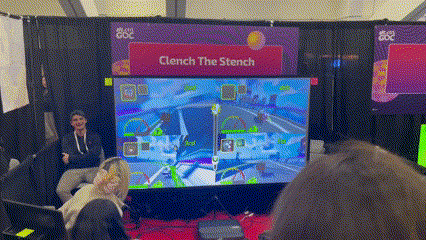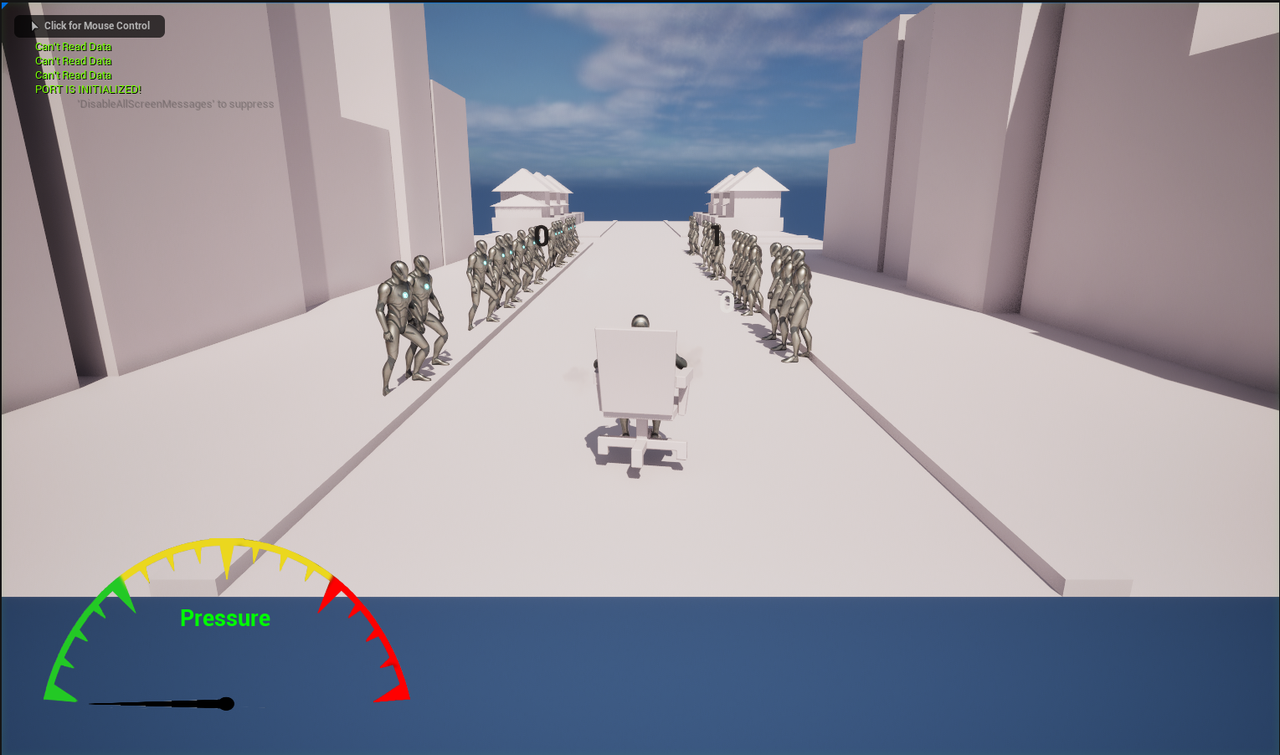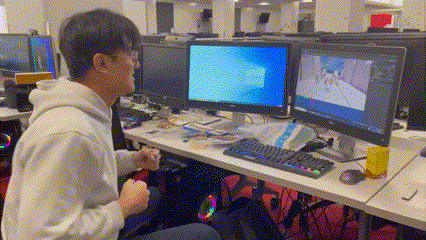Clench the Stench
Roles: Game Designer, Engineer
Production Time: ~ 3 Month
Team Size: 11
Engine: Unreal Engine
Platform: PC
Clench the Stench is a 4 Player cart racer where you race on an office chair. It is a project for a semester-long graduate class where we make an alternate controller from the ground up as a team.
Our team brought the game to GDC 2025 as one of the exhibitors in the alt control section and had over 1000 people play the game over the 3-day exhibition.
Roles and Responsibility:
Ideated, pitched and prototyped the initial gameplay prototype, which got voted into the final four games for the semester.
Scripted, iterated, and tuned the character and camera with engineers. Added camera behaviours are more responsive to players' input to enhance immersion.
As the vision holder, I ensured frequent communication among team members from different disciplines.
Ideation:
For the ideation process, I started by listing the constraints first. To aim for GDC, I started by researching the previous participants. One pattern I found was that the controls for the gameplay were all very simple. The reason was intuitive: hardware issues are the most significant factor. With the limited time and hardware experience, making a gameplay controller based on accurate controls would be difficult. The gameplay should also be simple enough because, under the setting of conventions, the game should be easy to learn and relatively short.
Another constraint I thought of was the size of the controller. It should be big enough to be visually noticeable but not too big so that it is not presentable at a booth.
The third constraint is that the interaction between the player and the controller should be more physical and not only limited to the movement of the hands (it is not differentiated enough from a regular controller).
Even with the constraints in mind, it still wasn’t easy for me to get an idea I felt confident with. However, the idea came when I realized I was twisting my body left and right on my office chair. This struck me as the core interaction I wanted the players to do:
It is engaging because full-body movement is a bit of exercise, naturally getting players excited.
It is fun to watch, especially when you put more people doing this on chairs for people to watch.
The idea of a party cart racing game naturally unfolded from here.
Character Control:
Initially, I prototyped the character movement for the project before more team members joined after the prototyping phase. One major iteration we made was the steering and turning. Initially, the plan was that the player would turn more if the pressure difference between the two pads was greater. However, this soon got ruled out. We found out through testing that most players tend to lift the cheek fully from the pad. Therefore, the readings on the pressure pad serve more as a bool than a float.
However, as we shift towards making a Mario Kart game, we must find a way to adjust how sharp the player steers. We had multiple solutions for this, but we used the paper prototyping technique to decide which one to try first. We asked people to play with the old build and told them the basic controls. We first had them go over a slight turn and then informed them that they could perform a sharper turn without specifically saying how. Then, when they reached the second turn, which was a sharper turn, we recorded how they intuitively thought the turning worked. We had some mixed results, but most people rotated their chairs while turning when asked to do the sharper turn. Therefore, we chose to use the chair rotation to control further how sharp you can turn.
There were still issues with how accurate the turn could be, even after rounds of tuning. One of the reasons was the inconsistency in the hardware reading, and it was difficult to pinpoint the problem.
Camera:
I also scripted the camera to add polish to the game. I played a couple of modern racing games, such as Forza Horizon, to get some reference on how they create a sense of speed with the camera. The first thing I added was camera lag and camera distance as the player's speed increased. I also added a small camera shake effect when the player is boosting.
However, one issue we faced was that the turning still felt unsatisfying, and I was looking into additional camera effects that could be added to the game. I compared our game to other racing games, and one significant difference was the controller and how the player interacted with it. I found that because players need to physically lift one of their butt cheeks and lean to the other side, I could make the camera rotate accordingly to match the players' experience. This is something not present in other games because the players are stationary in those games, holding a controller in hand. This proved to be a popular change as both internal and external testers preferred the new camera change.



